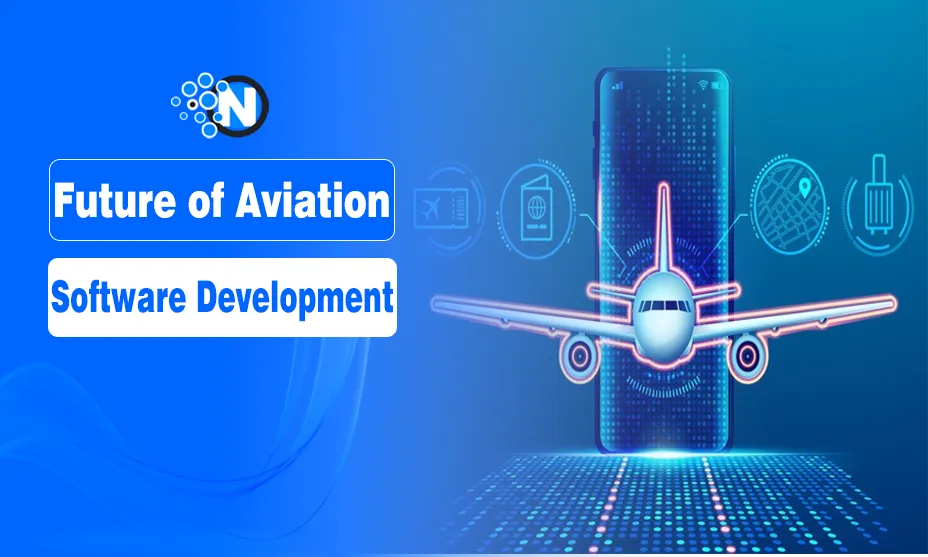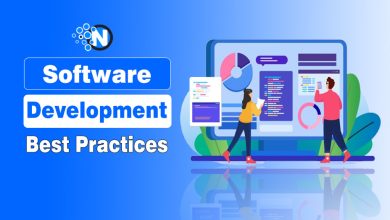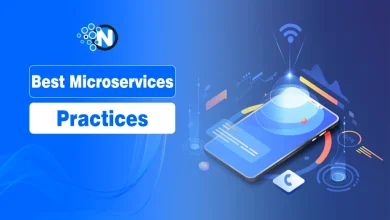The Future of Aviation Software Development: Enhancing Safety and Efficiency

In the ever-evolving world of aviation, software development plays a pivotal role in enhancing safety, efficiency, and innovation. It is fascinating to see how advanced algorithms and cutting-edge technology are transforming everything from flight operations to passenger experiences.
The complexity of aviation demands robust and reliable software solutions. From air traffic control systems to in-flight entertainment, each component requires strong design and development. This intricate dance of technology ensures that planes fly safely and passengers remain comfortable.
As we are going to explore aviation software development, we will determine the challenges developers face and the effective solutions they create. This journey into the digital cockpit promises to reveal how innovation continues to propel the aviation industry forward.
Challenges and Solutions in Aviation Software Development
Aviation software development involves unique challenges. Thus, they require targeted solutions to deal with them.
Safety
Safety remains the top priority since software errors can lead to uncalculated outcomes. To tackle this, rigorous testing and validation processes ensure safety-critical systems meet stringent standards like DO-178C. Development teams employ model-based design and formal methods to minimize risks.
Software Complexity
Software complexity also presents significant hurdles. Systems need seamless integration across numerous components, from navigation to communication. Developers use modular and scalable architectures, such as service-oriented architecture (SOA), to manage complexity and facilitate integration.
Regulatory Compliances
Compliance with regulatory requirements introduces another layer of difficulty. The aviation industry adheres to strict regulations from authorities like the FAA and EASA. Developers must incorporate these guidelines early in the design phase to avoid costly rework later.
Learning Curve
Technological advancements and innovation demand continuous learning. Developers should utilize the power of agile methodologies and continuous integration/continuous deployment (CI/CD) practices to accelerate development cycles and enhance the user experience in custom software development by delivering updates.
What is the Concept of Aviation Software?
Aviation software refers to applications and systems designed to facilitate operations within the aviation industry. It integrates various technologies to support important functions like:
- Navigation
- Communication
- Safety management
This software ensures that aircraft systems operate seamlessly, enhancing both efficiency and reliability. There are several categories of aviation software, each serving distinct roles:
- Flight Management System (FMS): Central hub for navigation and guidance in the cockpit.
- Air Traffic Control (ATC) Systems: Coordinates aircraft movements to prevent collisions and enhance safety.
- Passenger Service Systems (PSS): Manages processes related to passenger handling and ticketing.
- Maintenance, Repair, and Overhaul (MRO) Software: Supports efficient scheduling of aircraft maintenance to ensure airworthiness.
Developers in this field focus on precision and compliance. Extensive testing and following standards like DO-178C ensure software safety and reliability under varying conditions. Modular architectures like SOA enable integration with existing systems, providing scalability.
In my experience, keeping pace with technological changes and regulatory evolutions guides the iterative design and development process, facilitating innovations in aircraft operations and management.
Read More: Top Mistakes to Avoid When Choosing Customer Identity Verification Software
Difficulties in Using Aviation Software
Aviation software development navigates complex challenges. Successful implementation relies on overcoming these difficulties and ensuring safe, efficient aviation operations.
Complex Process of Implementation
Integrating aviation software presents difficulties due to the interconnection of various systems. Each component, from navigation to safety management, must work harmoniously. However, it demands proper planning and coordination.
You have to make sure that all systems follow the industry standards, like those set by the International Civil Aviation Organization (ICAO). The dependence on legacy systems further complicates integration. That’s why it is crucial to focus on backward compatibility and seamless data exchange across platforms.
Staff Training Process
The next important difficulty in using aviation software effectively is the lack of knowledge among the staff members. Aviation software often involves specialized user interfaces and functionalities that require extensive training.
That’s why, it is necessary to create training programs that accommodate different user proficiency levels. Hence, it guarantees optimal operational efficiency. Regular updates and software enhancements mean that ongoing education is essential.
It not only demands resources but also time commitments that organizations must manage strategically to maintain staff competence.
Solutions in Using Aviation Software
The following are the most practical solutions that can help you use aviation software in a more functional way.
- Navigate the intricacies of aviation software development with a strategic approach to overcome its challenges.
- Developers must adopt best practices for software development like modular and scalable architectures to manage system integration and ensure compliance with stringent regulations.
- Agile methodologies and CI/CD practices help keep pace with technological advancements while guaranteeing innovation and enhanced software reliability.
Final Thoughts
That’s all about the future of aviation software development. You should understand that training is a critical component in maximizing the potential of aviation software. Enhanced learning programs and ongoing education ensure that staff can efficiently operate these complex systems and adapt to updates and enhancements.
This strategic focus on precision, compliance, and continuous learning not only addresses current hurdles but also positions the aviation industry for future advancements. Hence, they can emphasize the vital role of software in shaping the skies.




